
Calathea Plant Guide
Numerous plants are employed for interior beautification and decor. Calathea is the plant for you if you're looking for a houseplant that will attract lots of attention. Some of the most stunning tropical plants in the world belong to the genus, Calathea, which is distinguished by its brightly coloured, oblong leaves with striking markings.
What precisely are Calathea plants?
Calathea plants are tropical flowering plants native to South Africa which belong to the Marantaceae plant family. Their broad, vibrantly coloured leaves are what make them famous. You might take a second look at the calathea houseplants because of the fascinating patterns on their foliage. Even the leaf's underside is extremely appealing. Even better, match the colour of your Calathea to that of your home decor. These gorgeous pieces may bring a splash of colour and complexity to any room in your house. Given that they are relatively simple to maintain and look wonderful, they are ideal to be used in both residential and office properties.

These plants are often referred to as the zebra plant, peacock plant, or rattlesnake plant because of their striking stripes and veining. Calatheas are sometimes known as prayer plants, a moniker that is also used for other species.
Why is Calathea referred to as "prayer plants"?
The particular movements of the leaf of these plants during the night and day cycle led to the emergence of the name "prayer plant." Some people claim that the leaves of this tough indoor plant frequently fold together at night, resembling a pair of praying hands at night when they open up and close.
Furthermore, because they are known for being rather picky about their growing circumstances, Calatheas can be challenging to take care of. They do best when kept in the warm, humid habitat of their native country because they are sensitive to cold. But don't be discouraged; Calathea can live happily in practically any household and location if the appropriate circumstances exist.
Symbolism
The Calathea represents a fresh start. That meaning comes from the phrase "to turn over a new leaf," which the plant does as night falls. So, as a present, give a Calathea to someone who is beginning fresh.

How many different Calathea plant species are there?
Calathea plants come in a variety of types that can be used inside. There is a calathea for every person as there are 39+ different calathea species, choice available.
We have the following calaltheas available:
Calathea Ornata
Calatheas of the ornata type are distinguished by their pinstriped leaves. It's quite unreal to see the lovely, tiny white stripes running along the glossy, dark green foliage.
Calathea orbifolia
Calathea orbifolia plants, which are distinguished by their enormous leaves and shimmering metallic green stripes, give your spaces a distinctive feel.
Calathea makoyana
These calathea plants, known as Calathea makoyana or "peacock calatheas," have unusual dark green bubbles on neon feather-like leaves. When touched, makhoyana leaves have a papery texture.
Calathea roseopicta
As lovely as their names indicate, Calathea roseopicta species have a border of rose-colored foliage that brings additional colour and brightness to your rooms.
Calathea zebrina
Its striped leaves have alternate bands of dark and light green, as suggested by the name. When touched, zebrina leaves had a velvety feel.
Calathea Rufibarba
Due to the hairy fuzz on its leaf and stem, Rufibarba calatheas is also known as fuzzy feather plants.
Calathea Jf Macbr
Although this plant is not drought-tolerant, it is generally forgiving if you occasionally forget to water it. Brown leaf tips or margins might occur as a result of prolonged dryness.
Calathea insignis
The plant species, Calathea insignis has stunning soft green swords with dark smudged patterns and vivid burgundy-purple undersides.
Calathea Dottie
Calathea Dottie features elliptical, feather-like foliage with eye-catching stripes, much like Calathea Makoyana. The pink border and pink stroke in the centre of the deep green burgundy leaves are hashed. Deep red-purple is a dramatic underside colour. It normally reaches heights and widths of around 12 inches.

Calathea burle-marxii Ice Blue
These breathtaking calathea plants are distinguished by their lovely white blossoms and extensive green foliage.
Calathea Bijoux Gecko
The indoor plant Calathea Bijoux Gecko is extremely rare. Modern propagation techniques are the only ones that make it feasible for it to have both a twofold ornamental value with particularly eye-catching and wide oval leaves that are brilliantly patterned in light green colours and its magnificent pale pink blooms.
Calathea Compactstar
The Calathea Compact Star's distinctive green and crimson leaf will sink at night and then reappear to welcome the dawn. It's incredibly simple for you to transform any surface into a magnificent show thanks to these elegant indoor plants that exude outstanding flair!
Calathea vitata
Calathea vitata has elliptical leaves that are bright green and have lots of thin, white stripes on them.
Calathea Network Plant
Its lance-shaped, midgreen leaves have veins that are dark green. They arrange themselves in a way that resembles a virtual network. Whenever the leaves are backlit, the effect is very dramatic. This popular houseplant is the ideal height for tabletops and desks.
Calathea Yellow Fusion
A stunning cultivar of the Marantaceae family called Calathea "Yellow Fusion" has yellow-lime green foliage and dark green variegation. The tightly coiled, bushy variegated foliage is a real eye-catcher that enlivens your living area. The leaves' undersides have a distinctive light purple colour.
Calathea Freddie
Calathea concinna 'Freddie', a member of the Maranaceae family, is a laid-back plant. It has a distinctive appearance due to its light green leaves that are striped with dark green veins in a zebra-like pattern.
Calathea Lietzei 'White Fusion'
These lovely calathea plants are noted for their breathtaking foliage, which has violet undertones.
Other species consist of:
Calathea lancifolia
Calathea lancifolia are calathea plants with glossy, long leaves that have bubbles of a dark green colour. They are frequently referred to as Rattlesnake calatheas because of this unusual leaf variegation.
While other calathea varieties have lovely leaves, these calathea crocata varieties stand out for their lovely blossoms with orange tones. Crocata has wavy and ruffled leaves.
Calathea warscewiczii
This plant, sometimes known as the jungle velvet plant, has dark and light leaves with a purple tint on the undersides.
Calathea musaica
These calathea plants, which are known for their intricate patterns on the leaf, can give your spaces a special touch.
Calathea marantifolia
These are recognised for their white flowers and textured, dark green foliage.
Calathea bachemiana
These calatheas are distinguished by their silvery-white foliage with green markings. These plants look great in both home and workplace environments.
Calathea loeseneri
These plants are renowned for their gorgeous white floral buds and leafy greenery. The plants' white blossoms can provide brightness to your surroundings.
Calathea latifolia
These plants can give colour to your areas and are recognised for their purple infloresence.
Calathea louisae
The calathea louisae, often known as Thai beauty, is distinguished by its appearance of painted leaves.
Calathea micans
Any corner of your interiors can be complemented by these small calathea plants.
Calathea lutea
The calathea plant, sometimes known as a cigar plant, can reach a maximum height of 3 to 4 metres.
Calathea lasiostachya
The lengthy, extended foliage of these calathea plants is well known.
Calathea majestica
Often referred to as the "white star plant," this plant is distinguished by its white borders and leaf-streaks.
Calathea gymnocarpa
Beautiful foliage is what these calathea plants are renowned for.
Calathea fasciata
The heart-shaped leaves of these calathea plants are distinctive for having alternate stripes of dark and light green on their surface.
Calathea ecuadoriana
These calatheas are renowned for having purple undersides to their leaves.
Calathea albertii
The feather designs on the leaves of these Alberti calatheas are well known.
Calathea crotalifera
The foliage of these crotaliferas has a touch of both dark and light green.
Calathea macrosepala
These calatheas live up to their name by having large flower buds and foliage.
Calathea undulate
One of the lesser-known calathea species is distinguished by a light-green feather pattern that runs along the middle of a dark-green lamina.
Calathea picturata
The leaves of this calathea kind is picture-perfect, with a light leaf lamina and dark green margins.
Calathea leopardina
These calathea plants draw attention because of their silvery lamina with dark green patterns resembling leaves.
Calathea Silver Plate
These calathea plants were distinguished by their silvery green leaves, living up to their moniker "silver plate."
Calathea fucata
These calatheas are distinguished by their alternately striped silvery and green foliage.
Calathea wiotii
One of the miniature calathea plant varieties, with a maximum height of 15 cm.
Calathea Pink Aurora
The calathea plants are distinguished by their pinkish-tinged silvery green foliage.
Calathea Helen Kennedy
The peacock-patterned leaves on these calathea plants gives them a wonderful plant mood for Instagram.
Calathea elliptica
Known for its violet-tinged off-white blossoms and dark green leaves with hints of bright green.
Calathea stromanthifolia
These plants are distinguished by their silvery green-patterned foliage.
Calathea truncate
The lengthy, patterned leaves of these plants are well-known.
Benefits of owning a Calathea plant
There is no denying that calatheas are decorative beauties that enhance the visual value of your rooms, but they also have numerous other advantages which are listed below:
Purifies and boosts oxygen levels in the air
Several indoor plants are regarded as high oxygen suppliers. They have unique properties, methods, or substances that contribute to the air's purification. This list also includes the plant Calathea, which provides oxygen to you even while you're asleep.
Decorative and ornamental appearance
The most significant reason to purchase an indoor plant is to use it as a decorative item. What qualities would you seek in an indoor plant? Their need for care? The cost? Their advantages? Sure, go ahead. Calathea is arguably one of the most intriguing plants in terms of appearance. Their leaves are brilliant green, and each plant has a unique pattern of striations. In addition to that, they also offer lovely blossoms that are sure to enchant your eyes.
Enhances the level of humidity
Numerous indoor plants contribute to raising the air's moisture content, which raises the area's relative humidity. Similar to other plants, a healthy Calathea increases the moisture level in the area around it. Calathea leaves do a good job of retaining moisture from their environment. The plant doesn't use all of the moisture available to it. Some are additionally released into the environment.
Reduces stress
It is virtually difficult to live a stress-free existence as a person. Everyone is prone to stress, whether they are at home, work, or school. There is, however, a lesser-known fact. Having a green plant around or planting one yourself can help you feel less stressed.
Calathea is also recognised for reducing the stress level. Although it may seem absurd, spending just a few minutes with this plant might help you decompress after a difficult and exhausting day at the workplace.
The Calathea plant traps dust.
Due to the fact that the residual particles won't stop drifting and settling within your home, you should be very weary of regularly vacuuming your property. Many plants have mystical traits that function to capture airborne dust particles. One of them is Calathea.
All things considered, you are in for a treat if you recently acquired a Calathea plant.
Calathea has large, waxy leaves that are quite effective at collecting debris around your home. They not only capture dust, but also particulate matter (PM). Particulate Matters are a mixture of solid substances like dust, smoke, and soil with liquid substances. PMs are visible to the naked eye.
A guide to care for Calatheas
As was already mentioned, calatheas are hassle free and simple to cultivate plants. You only need to give your variegated beauties a little care and attention by following this plant care advice.
Sunlight
Calatheas prefer areas with bright sunlight or indirect sunlight. Experiencing direct high-intensity light may cause foliage to burn.
Water
Calatheas just require a medium amount of watering. When the top layer of the soil feel dry to the touch, water your plant then only. Avoid overwatering your calathea plant to prevent root rot troubles.
When watering calathea, the kind of water utilised can have an impact. Tap water may contain various minerals or substances that can harm leaves. If the leaf edges are brown, the water may be high in salt or contain chlorine, chloramine, bromide, or fluoride. If you believe tap water is unsuitable for your calathea, it may be preferable to water the plant with filtered, distilled, or water retrieved from a dehumidifier.
Soil
Calatheas require soils with adequate aeration and drainage. The best soils are loamy or those which have a considerable sand content. (You can examine the soil's drainage by wetting the soil-filled pot and taking into account when to drain the water.) You can alternatively choose to use the nearby ready-made pot mix or garden soil.
Temperature
For calathea to grow well, a temperature range of 20 to 30 is ideal. Calatheas can be grown in a variety of containers, including grow pots, self-watering pots, ceramic planters, and plastic planters. Never forget to start with a pot that is at least 4 inches in diameter.
Repotting
If you notice the plant getting heavier or the roots extending through the container's drain holes, it's time to move your Calathea plant to a pot that is 2 inches larger than the one it is currently in.
Fertilizer
Fertilizers can be applied in bulky organic manures of 100 to 250 gm once every three to five months or once a month with well-balanced liquid fertilisers. (Always put fertilisers a little bit distant from the stem's base to avoid burning the foliage.)
Expectations for growth
Although growth is dependent on many internal and external conditions, such as the amount of light, nourishment, the quality of the planting materials, etc., you can anticipate growth of 3 to 6 inches in height and spread every three months.
Propagation
Calatheas may be multiplied for a minimal cost, and it also gives you the chance to grow plants with particularly lovely colours and patterns. The optimal time to propagate calathea is in the spring or summer because of its active development throughout these seasons. Root division is the most effective method of calathea propagation, however it should only be used on healthy, two-year-old parent plants. How to do it is as follows:
- The day before you intend to divide your plant, water it to ensure that the roots have enough time to absorb moisture.
- Avoid damaging the plant's roots by gently digging it up.
- To separate the plant into two parts, gradually pull apart the roots. To separate obstinate roots, a garden fork may be useful.
- Replant the new portions at the same depth as before in their new growing locations. Water to make the soil moist.
Pruning
Calathea plants don't need to be pruned frequently. The only upkeep required in this area is trimming off wilted, discoloured, and dying leaves as they appear. The leaves will eventually fall off on their own, so the purpose of doing that is essentially merely to keep the plant looking neat and tidy.
Pet Friend or Foe?
Without a doubt, the answer is yes, all calatheas are safe. They are safe to maintain near cats and dogs because they are believed to be non-toxic.
Common issues with Calathea and how to fix them
Wilted brown edges
Cause
Low humidity and inadequate watering may be to blame for the calathea edges' wilting and browning. Even if you routinely water your plants, the issue still exists because the water is of poor quality.
Maintenance
Using a hand sprayer to sprinkle water enhances humidity. Always water the plant right away if the top soil layers seem to be drying out. Use water without salt to water your calathea plants.
Brown/yellow patches or discoloration
Cause
The cause of this could be sap-sucking insects like mites, thrips, etc.
Maintenance
Always get your plants from a reputable retailer that can guarantee their quality. For insect management, use 5ml of neem oil per litre of water.
Mushy leaves and stems
Cause
Overwatering, inadequate soil aeration, and water logging
Maintenance
Never overwater your plant. Always grow your plants in well-drained potting medium, and check that the drain holes are clear before watering.
Leaves with lumps or white patches
Cause
The cause of the white patches and lumps on the leaves may be mealy bugs or scales.
Maintenance
Immediately cut off and burn any infected plant sections. Apply any insecticidal soap at 1 to 2 ml per litre of water and promptly isolate the plant if more than a quarter of it is damaged.
Professional advice
- To maintain your calathea leaves dust-free, periodically wipe them with a moist cloth. Dust-free leaves get enough of light, which promotes healthy growth.
- To keep your plant healthy, remove all dried-out and discoloured leaves right away.
- Use 2 ml of liquid soap and 5 ml of neem oil per litre of water as a prophylactic precaution.
FAQs
Where should I put the calathea plant in my home?
The best spot for Calathea plants is any area that has a window that lets in some light; they should also be kept away from draughts and vents for heating and cooling. A calathea plant may thrive in a bedroom or living area, however bathrooms frequently have higher humidity levels.
What height do calathea plants reach?
In actuality, Calathea plants typically cease growing after reaching a height of about 2 feet. After that, you just need to prune the leaves that are yellow, crispy, or brown.
Can calathea be grown indoors?
Since they don't need extremely strong natural sunshine, calatheas are frequently kept as indoor plants. For them to remain comfortable indoors, a warm, humid climate must be maintained.
How do you manage the water for Calathea?
Water your Calathea plants with distilled water or water that has undergone some sort of purification if you have a limited supply. Calathea prefer damp, but not soggy, soil or other planting materials. They don't like a lot of water because it could make them drown.
Why are the leaves of my Calathea drooping?
Underwatering, or the plant being thirsty, is indicated by wilting or drooping leaves. However, don't mistake this for how the leaves naturally sway to mimic the movement of the sun. Always check the soil's moisture content before watering.
How frequently should we fertilise the plant?
When fertilised during the growing season, which lasts from mid-summer until just before winter, houseplants, which love nutrients, will flourish. Use organic compost or a general-purpose, well-balanced houseplant fertiliser.
Calathea Plants Collection
-
Original price Rs. 699.00Original price Rs. 699.00 - Original price Rs. 699.00Original price Rs. 699.00Current price Rs. 449.00Rs. 449.00 - Rs. 449.00Current price Rs. 449.00
Calathea Roseopicta Illustris Plant
Calathea Roseopicta Illustris is a tropical houseplant that features dark green leaves with vibrant pink stripes. Loved by indoor plant enthusiast...
View full detailsOriginal price Rs. 699.00Original price Rs. 699.00 - Original price Rs. 699.00Original price Rs. 699.00Current price Rs. 449.00Rs. 449.00 - Rs. 449.00Current price Rs. 449.00Sale -
Original price Rs. 699.00Original price Rs. 699.00 - Original price Rs. 699.00Original price Rs. 699.00Current price Rs. 449.00Rs. 449.00 - Rs. 449.00Current price Rs. 449.00
Calathea Roseopicta Medallion Plant
Calathea Roseopicta Medallion is a plant from Brazil that has large, dark green leaves with hues of green, cream, and rosy red. Its unique foliage ...
View full detailsOriginal price Rs. 699.00Original price Rs. 699.00 - Original price Rs. 699.00Original price Rs. 699.00Current price Rs. 449.00Rs. 449.00 - Rs. 449.00Current price Rs. 449.00Sale -
Original price Rs. 649.00Original price Rs. 649.00 - Original price Rs. 649.00Original price Rs. 649.00Current price Rs. 499.00Rs. 499.00 - Rs. 499.00Current price Rs. 499.00
Calathea Dottie Plant
Calathea Dottie (Prayer Plant) is a striking member of the Calathea Roseopicta family. With deep green burgundy leaves with pink borders and a cent...
View full detailsOriginal price Rs. 649.00Original price Rs. 649.00 - Original price Rs. 649.00Original price Rs. 649.00Current price Rs. 499.00Rs. 499.00 - Rs. 499.00Current price Rs. 499.00Sale -
Original price Rs. 699.00Original price Rs. 699.00 - Original price Rs. 699.00Original price Rs. 699.00Current price Rs. 449.00Rs. 449.00 - Rs. 449.00Current price Rs. 449.00
Calathea Orbifolia Plant
Calathea Orbifolia is a beautiful houseplant hailing from Bolivia's tropical rainforests. It's famous for its large, green-striped leaves. This uni...
View full detailsOriginal price Rs. 699.00Original price Rs. 699.00 - Original price Rs. 699.00Original price Rs. 699.00Current price Rs. 449.00Rs. 449.00 - Rs. 449.00Current price Rs. 449.00Sale -
Original price Rs. 699.00Original price Rs. 699.00 - Original price Rs. 699.00Original price Rs. 699.00Current price Rs. 449.00Rs. 449.00 - Rs. 449.00Current price Rs. 449.00
Calathea Compact star Live Plant
The Brazilian beauty, Calathea Compact Star is a stunning plant for home and office areas. With its easy care and exotic appearance, it's perfect f...
View full detailsOriginal price Rs. 699.00Original price Rs. 699.00 - Original price Rs. 699.00Original price Rs. 699.00Current price Rs. 449.00Rs. 449.00 - Rs. 449.00Current price Rs. 449.00Sale













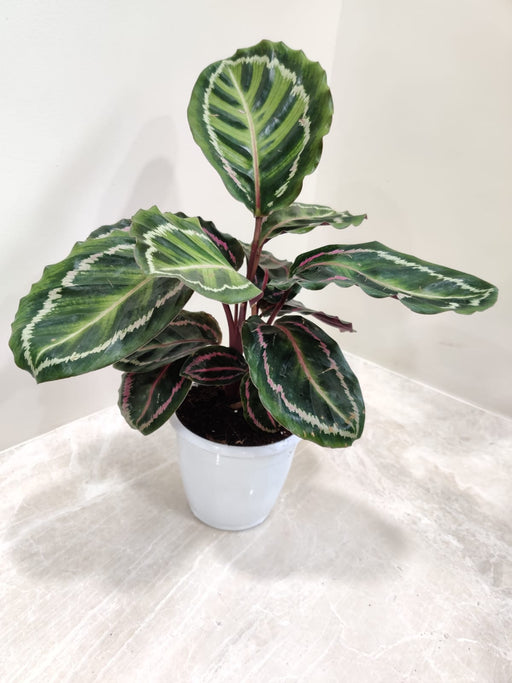
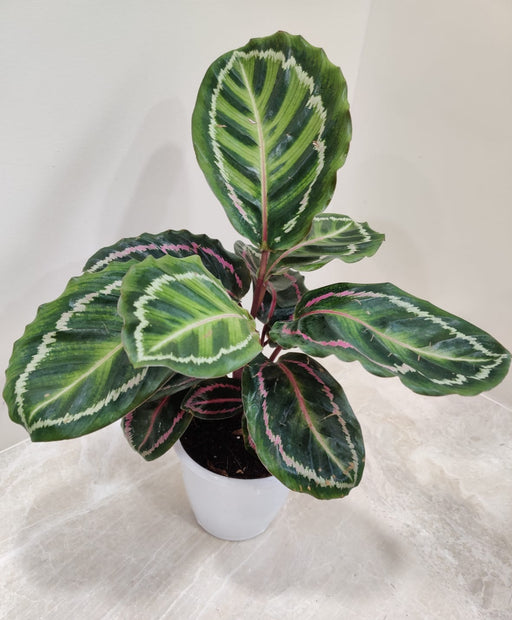
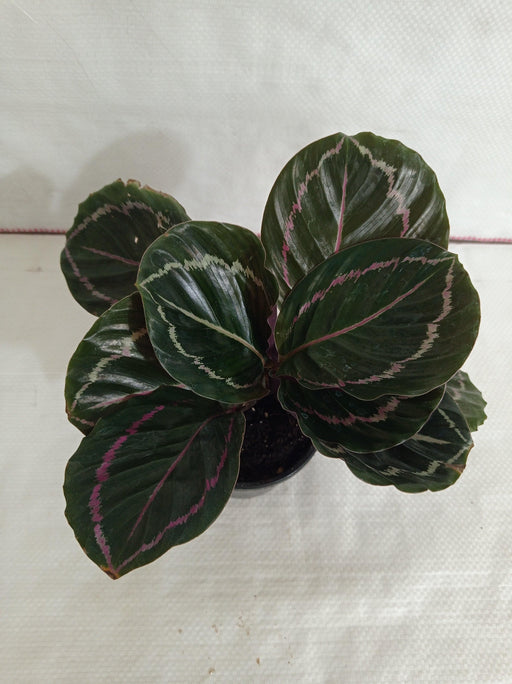

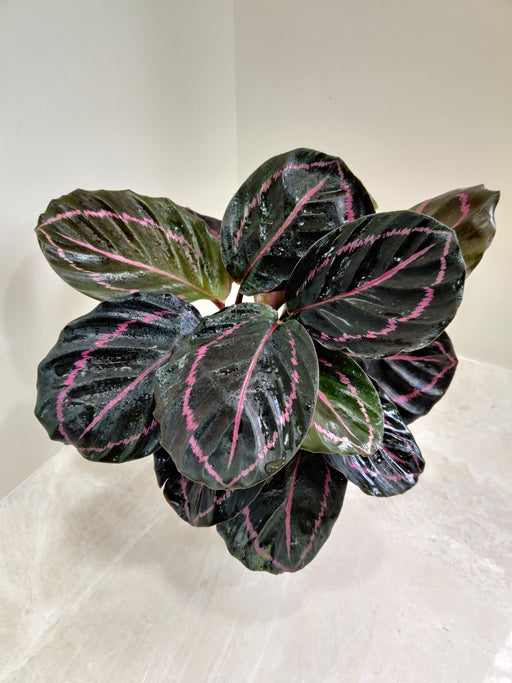
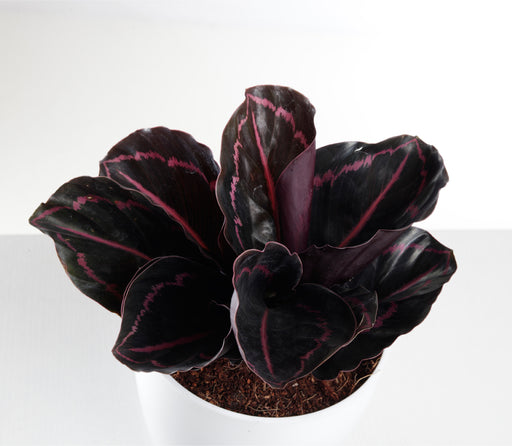
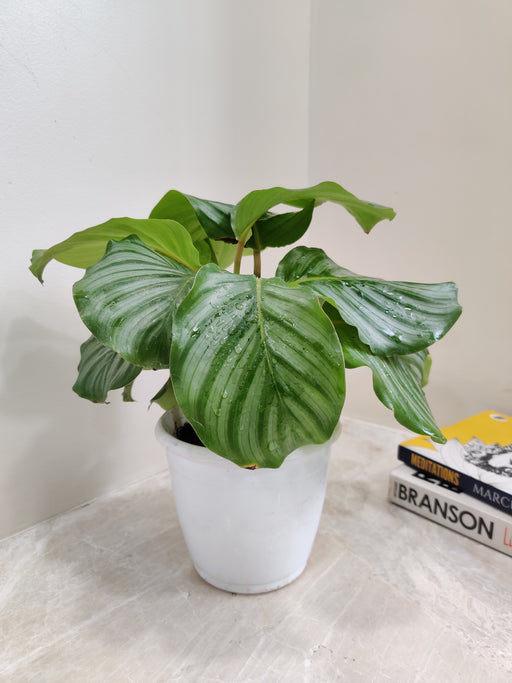
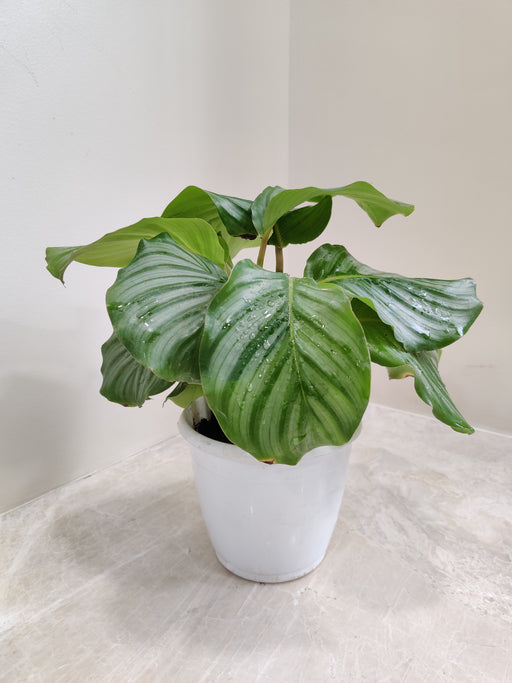
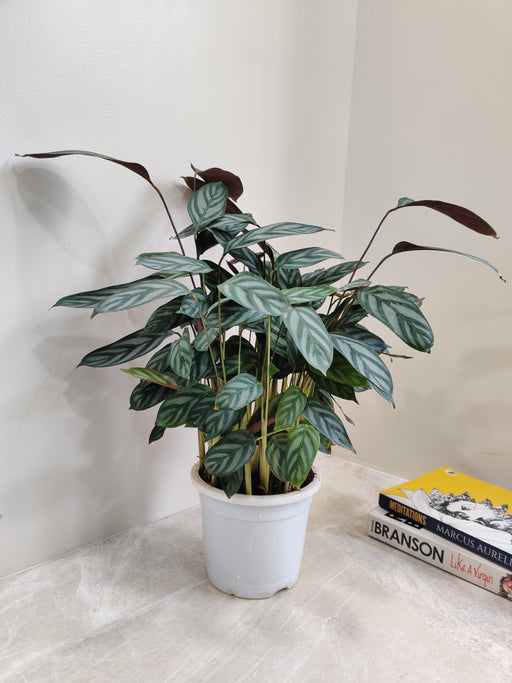
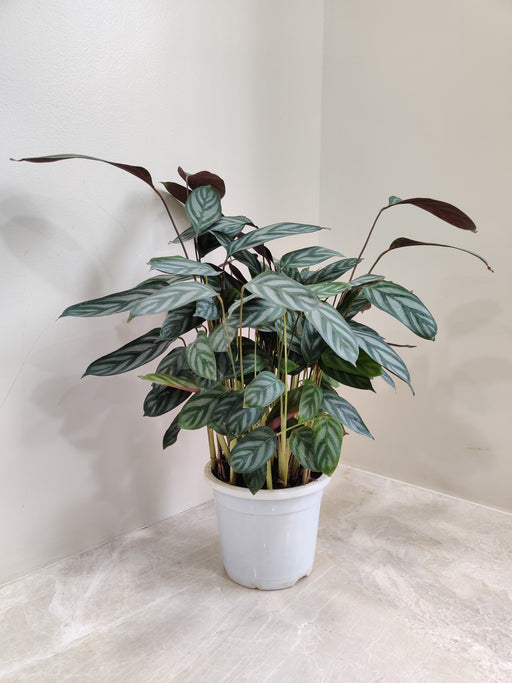
Leave a comment